Search the Special Collections and Archives Portal
Search Results
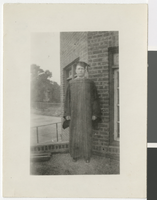
Photograph of Leonard Fayle, Philadelphia (Pa.), 1926
Date
1922
Description
Leonard Fayle poses while wearing a graduation gown and cap.
Image

Photograph of horses and people, (Pa.), 1922-1926
Date
1922 to 1926
Description
People sit in the stands while watching what appears to be a rodeo.
Image
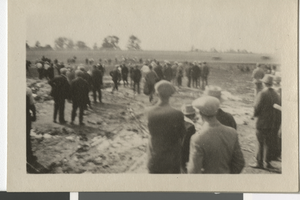
Photograph of individuals on muddy road, (Pa.), 1922-1926
Date
1922 to 1926
Description
After the rodeo event, people walk across the muddy grounds.
Image
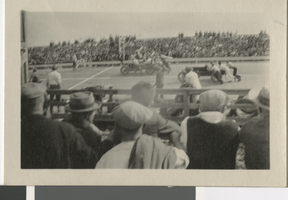
Photograph of a race, (Pa.), 1922-1926
Date
1922 to 1926
Description
Crowds of people sit in the stands and watch a race.
Image
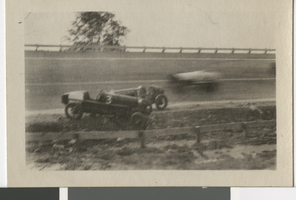
Photograph of a racecar, (Pa.), 1922-1926
Date
1922 to 1926
Description
Racecar speeds by on the racetrack.
Image
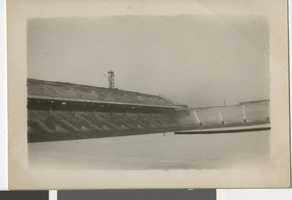
Photograph of a sports arena, 1922-1926
Date
1922 to 1926
Description
Some type of sports arena.
Image
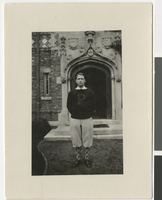
Photograph of Leonard Fayle at the University of Pennsylvania, Philadelphia (Pa.), 1922-1926
Date
1922 to 1926
Description
Leonard Fayle dressed in his best, poses in front of his school.
Image
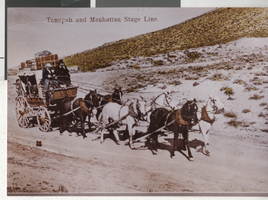
Photograph of a horse drawn stagecoach, Tonopah (Nev.), circa 1905
Date
1904 to 1906
Archival Collection
Description
Horse drawn stage leaving Tonopah for Manhattan, circa 1905. There was an inscription on the image. "The coaches were the primary mode of passenger transportation between central Nevada's early mining camps. They were eventually replaced by railroads which built into Rhyolite, Goldfield, Tonopah, and Blair, but served the area's smaller satellite camps until the mid-1910's when the automobile took their place. The photo was reproduced from an original 1905 colored postcard."
Image

Photograph of the interior of a meat market, Tonopah (Nev.), 1905
Date
1905
Archival Collection
Description
There was an inscription on the image. "Typical of most central Nevada mining camp meat markets, the floor was covered with sawdust and the only preserved meat available was salt pork, bacon and the hams hanging above the counter. Everything else was cut fresh from quarters. There was no refrigeration. The shops sold beef, horse meat, pork, mountain sheep and, if nothing else was available, burro meat. The cans on the shelves on the right contained lard."
Image
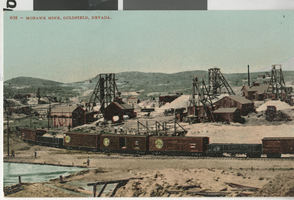
Postcard of Mohawk Mine, Goldfield (Nev.), 1905
Date
1905
Archival Collection
Description
Original color postcard featuring the Mohawk Mine, Goldfield , Nev. 1905. The Mohawk was known as "One of the richest pieces of ground in Nevada. If not the World." Production exceeded $8,000,000 before the mine became part of the Goldfield Consolidated Mining Company in late 1906.
Image
Pagination
Refine my results
Content Type
Creator or Contributor
Subject
Archival Collection
Digital Project
Resource Type
Year
Material Type
Place
Language
Records Classification
